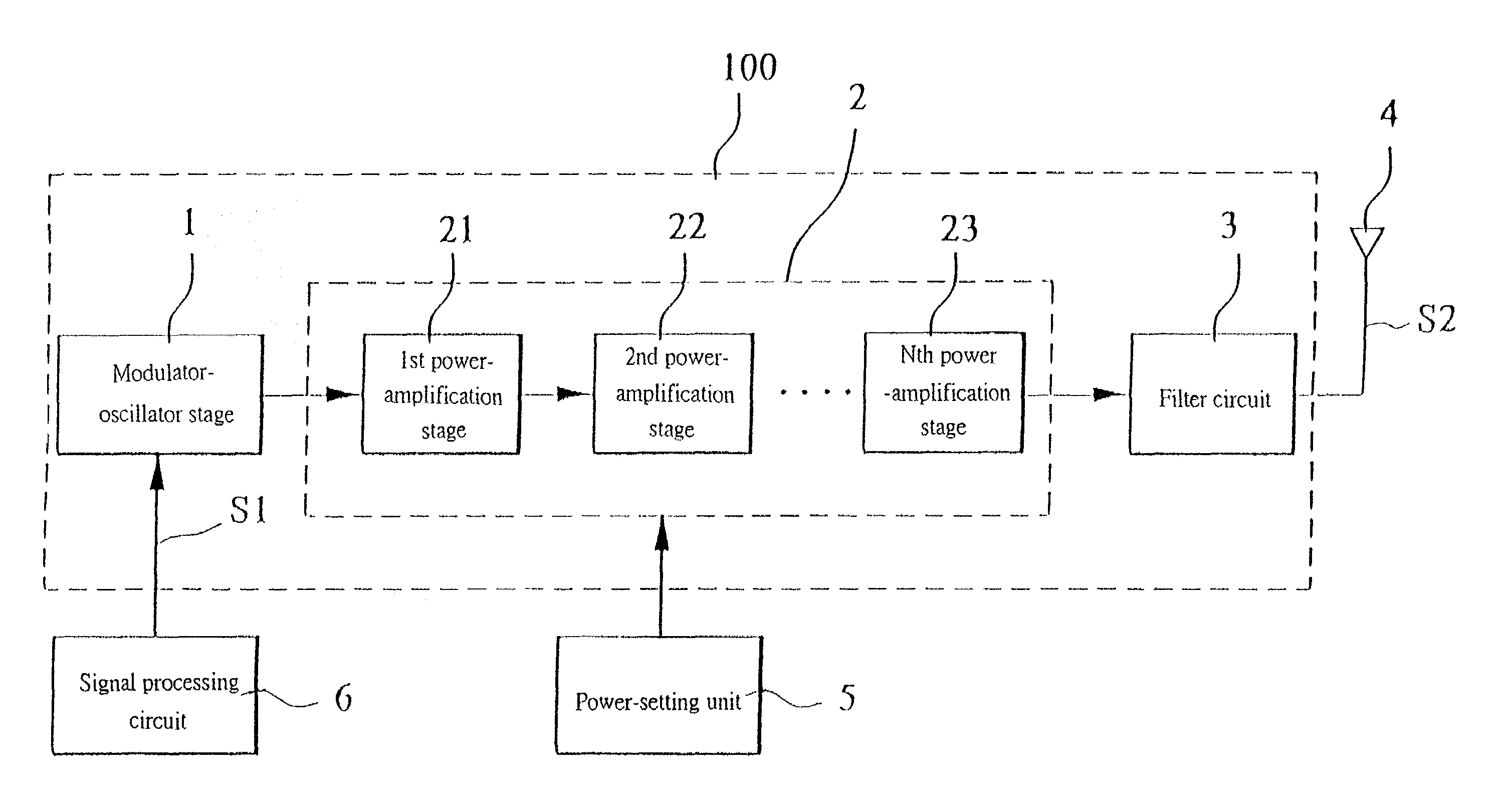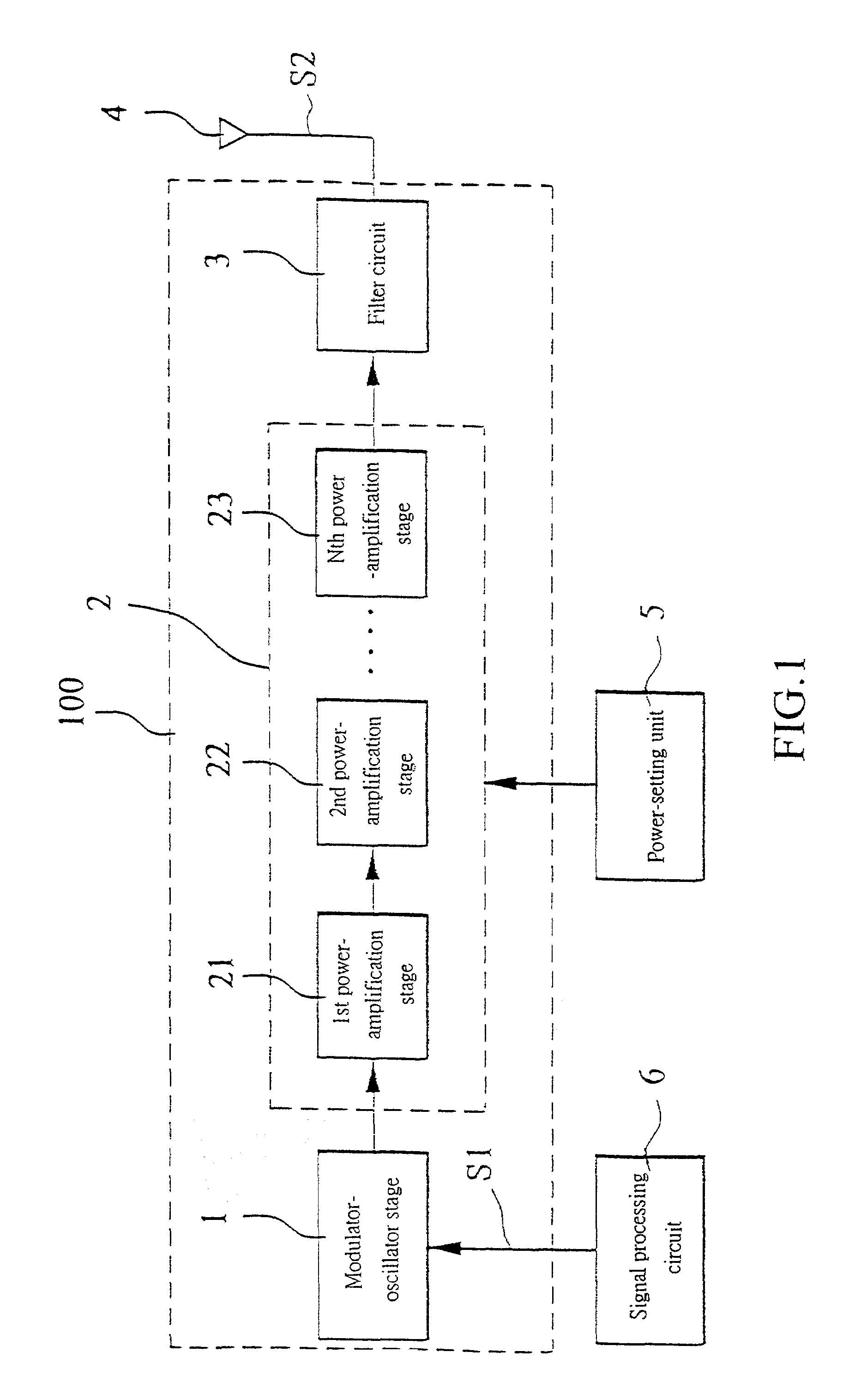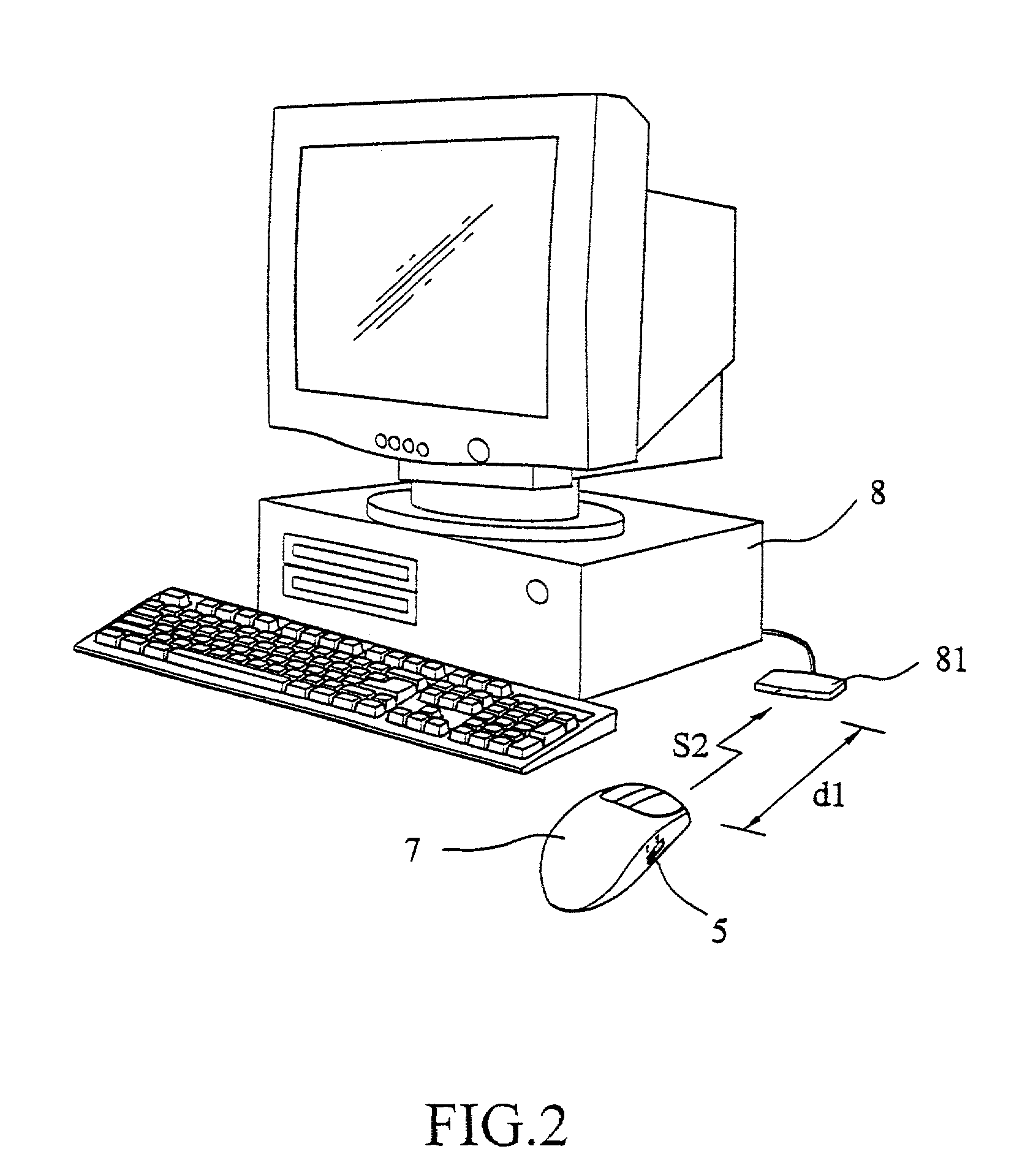Wireless transmission circuit enabling modulation of radio frequency power amplification
- Summary
- Abstract
- Description
- Claims
- Application Information
AI Technical Summary
Benefits of technology
Problems solved by technology
Method used
Image
Examples
Embodiment Construction
[0015]Please refer to FIG. 1 that is a block diagram explaining the circuit function of a wireless transmission circuit 100 enabling modulation of RF power amplification. The wireless transmission control circuit 100 mainly includes a signal modulator-oscillator stage 1, a cascade power amplification circuit 2, a filter circuit 3, an antenna 4, and a power-setting unit 5. An input of the signal modulator-oscillator stage 1 is connected to a signal processing circuit 6 for receiving an input signal S1 output by the signal processing circuit 6.
[0016]The signal processing circuit 6 may be any signal processing circuit for a mouse, a keyboard, a joystick, a track ball, a game controller, a digital signal camera / PC camera, a digital signal video camera / PC video camera, or any other input device or pointing device for generating the input signal S1. The input signal S1 is first sent to the signal modulator-oscillator stage 1 of the wireless transmission control circuit 100, at where the i...
PUM
 Login to View More
Login to View More Abstract
Description
Claims
Application Information
 Login to View More
Login to View More - R&D
- Intellectual Property
- Life Sciences
- Materials
- Tech Scout
- Unparalleled Data Quality
- Higher Quality Content
- 60% Fewer Hallucinations
Browse by: Latest US Patents, China's latest patents, Technical Efficacy Thesaurus, Application Domain, Technology Topic, Popular Technical Reports.
© 2025 PatSnap. All rights reserved.Legal|Privacy policy|Modern Slavery Act Transparency Statement|Sitemap|About US| Contact US: help@patsnap.com



